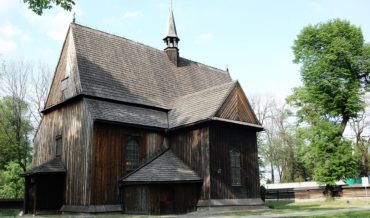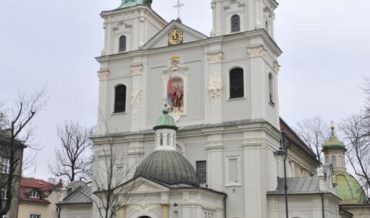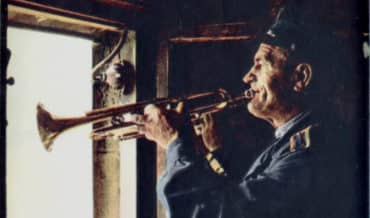Contents
Key Facts
- Born in 1814 in Cerekwica, died in 1904 in Krakow – lived for 90 years
- Studied at the Krakow School of Fine Arts and worked as a parish school teacher
- Specialized in religious painting with works displayed in major Krakow churches
- Contributed to the restoration of the famous Wit Stwosz altar in St. Mary's Church in 1867
- Created significant works including paintings in the Reformed Church and banners in the Historical Museum of Krakow
- Father of two sons (including Władysław) and daughter Maria
Early Life and Education
Wojciech Eljasz was born in 1814 in Cerekwica, a small village that would shape his humble beginnings before he became one of Krakow's notable religious painters. His early life coincided with the period of the November Uprising (1830-1831) and the subsequent intensification of foreign rule in Poland, which profoundly influenced the cultural and artistic landscape of his generation.
Eljasz pursued his artistic education at the prestigious Academy of Fine Arts, where he mastered classical composition techniques, realistic figure rendering, and the principles of chiaroscuro that would become hallmarks of his mature work. The institution, founded in 1818, emphasized academic traditions rooted in European artistic conventions while fostering an emerging Polish national artistic identity. His training included intensive study of human anatomy, color theory, and traditional oil painting techniques essential for religious art.
Professional Career and Teaching
Beyond his artistic pursuits, Eljasz served as a teacher at St. Adalbert's parish school in Krakow, where he taught drawing and catechism for over two decades. This dual role as both artist and educator was strategically important for 19th-century Polish intellectuals, who often combined creative work with teaching to maintain financial stability while contributing to cultural preservation during periods of political suppression.
His educational position provided him with intimate knowledge of Catholic liturgical requirements and deep connections to local religious communities. This practical understanding of ecclesiastical needs directly influenced his artistic approach, enabling him to create works that served specific devotional and ceremonial purposes while maintaining the highest artistic standards.
Artistic Style and Religious Focus
Eljasz specialized primarily in religious paintings for churches, developing a distinctive style that combined academic realism with emotionally resonant Catholic iconography. His technique demonstrated mastery of traditional oil painting methods, employing dramatic lighting effects to enhance spiritual narratives and precise anatomical rendering that brought biblical and hagiographic subjects to life.
Working during Poland's partition period (1795-1918), Eljasz understood that religious art served dual purposes: inspiring prayer and contemplation while maintaining Polish cultural identity through visual symbols and traditional Catholic imagery. His paintings frequently incorporated subtle nationalist elements through the selection of Polish saints and the use of compositional techniques that emphasized themes of suffering and redemption, contributing significantly to 19th-century Polish art.
Major Works and Locations
Reformed Church Collection
In the Reformed Church on Reformacka Street, located in Krakow's historic Old Town, Eljasz created his most celebrated cycle of works related to Franciscan churches:
- "The Vision of St. Anthony" – This masterpiece employs vibrant blues and golds to create a mystical atmosphere, with dynamic composition drawing the viewer's eye upward toward the divine apparition
- "Stigmata of St. Francis" – Demonstrates Eljasz's skill in portraying physical and spiritual agony through dramatic chiaroscuro and expressive gesture, making the saint's mystical experience tangible for worshippers
- "Saint Peter of Alcantara" – Features Eljasz's characteristic attention to textile details and facial expression, capturing the Spanish saint's ascetic spirituality
Capuchin Monastery
At the Capuchin monastery on Loretanska Street, Eljasz created a highly detailed miniature portrait of Brother Joachim, showcasing his versatility in intimate portraiture. This work demonstrates his ability to capture individual spirituality and character in precise brushwork and subtle color gradations, techniques that required exceptional technical skill in small-format painting.
Historical Museum of Krakow
The Historical Museum of Krakow preserves two ceremonial banners representing Eljasz's contribution to Polish civic and religious celebrations:
- Banner with St. Florian – Features the patron saint of Poland in full ceremonial armor, painted with meticulous attention to metallurgical details and incorporating traditional Polish heraldic elements
- Banner with St. Stanisław Szczepanowski – Honors Krakow's patron saint with rich ecclesiastical vestments and symbolic references to martyrdom and resistance, themes particularly meaningful during the partition era
These processional banners demonstrate advanced textile painting techniques and represent important examples of Polish ceremonial art that bridged religious and patriotic expression, reflecting the rich Christian heritage of the city.
Historic Restoration Work
Wit Stwosz Altar Restoration
Eljasz's most prestigious professional achievement was his collaboration in the 1867 restoration of the Wit Stwosz altar in St. Mary's Basilica. Working under the direction of master restorer Jan Matejko, Eljasz specialized in color matching and pigment restoration for the altarpiece's painted panels, requiring expertise in medieval painting techniques and period-appropriate materials.
The project involved recreating 15th-century painting methods, including the preparation of traditional tempera and oil-based pigments that would be compatible with Veit Stoss's original work. Eljasz's involvement in this internationally significant restoration project demonstrates the exceptional regard in which ecclesiastical and cultural authorities held his technical abilities and historical knowledge.
His work on individual panels included detailed cleaning and selective repainting of damaged sections while maintaining strict fidelity to the original artistic intent. This restoration experience enhanced his reputation and influenced his subsequent religious paintings, incorporating techniques learned from studying medieval masterworks.
Personal Life and Legacy
Eljasz maintained a stable family life with his wife Anna and their children: sons Władysław (who became a craftsman) and Józef, and daughter Maria. His remarkable longevity—spanning from the Napoleonic era through the early 20th century—allowed him to witness 90 years of Polish cultural and political transformation.
His death in Krakow in 1904 coincided with the beginning of Young Poland artistic movement, marking the transition between academic religious painting traditions and modernist approaches. His works continue to serve their original liturgical functions while representing important documentation of 19th-century Polish artistic achievement and Catholic devotional practices. Today, his artistic legacy can be appreciated alongside other masterworks at the National Museum.
Cultural and Historical Context
Eljasz's career developed during the Galician period of relative cultural autonomy (1867-1918), when Krakow experienced renewed artistic activity under Austrian rule. This cultural renaissance was centered around the historic core of the city, surrounded by the beautiful Planty park, and was further supported by institutions like the Jagiellonian University. Religious art became particularly significant as a means of preserving Polish spiritual traditions and national identity through visual culture that could operate within acceptable political boundaries.
His artistic approach represents the intersection of European academic training, local religious devotion, and subtle nationalist expression that characterized much of 19th-century Polish ecclesiastical art. Through his paintings, teaching, and restoration expertise, Eljasz contributed to the cultural continuity that sustained Polish artistic traditions through partition period challenges.
References and Sources
- Chrzanowski, Tadeusz, and Marian Kornecki. Sztuka Ziemi Krakowskiej. Kraków: Wydawnictwo Literackie, 1982.
- Polski Słownik Biograficzny, Vol. VI. Kraków: Polska Akademia Umiejętności, 1948.
- Samek, Bolesław. Katalog zabytków sztuki w Polsce: Miasto Kraków, Część IV. Warszawa: Instytut Sztuki PAN, 1971.
- Archives of the Archdiocese of Krakow, Parish Records of St. Adalbert's Church, 1840-1890.
- National Museum in Krakow, Department of Polish Art Documentation Files.


